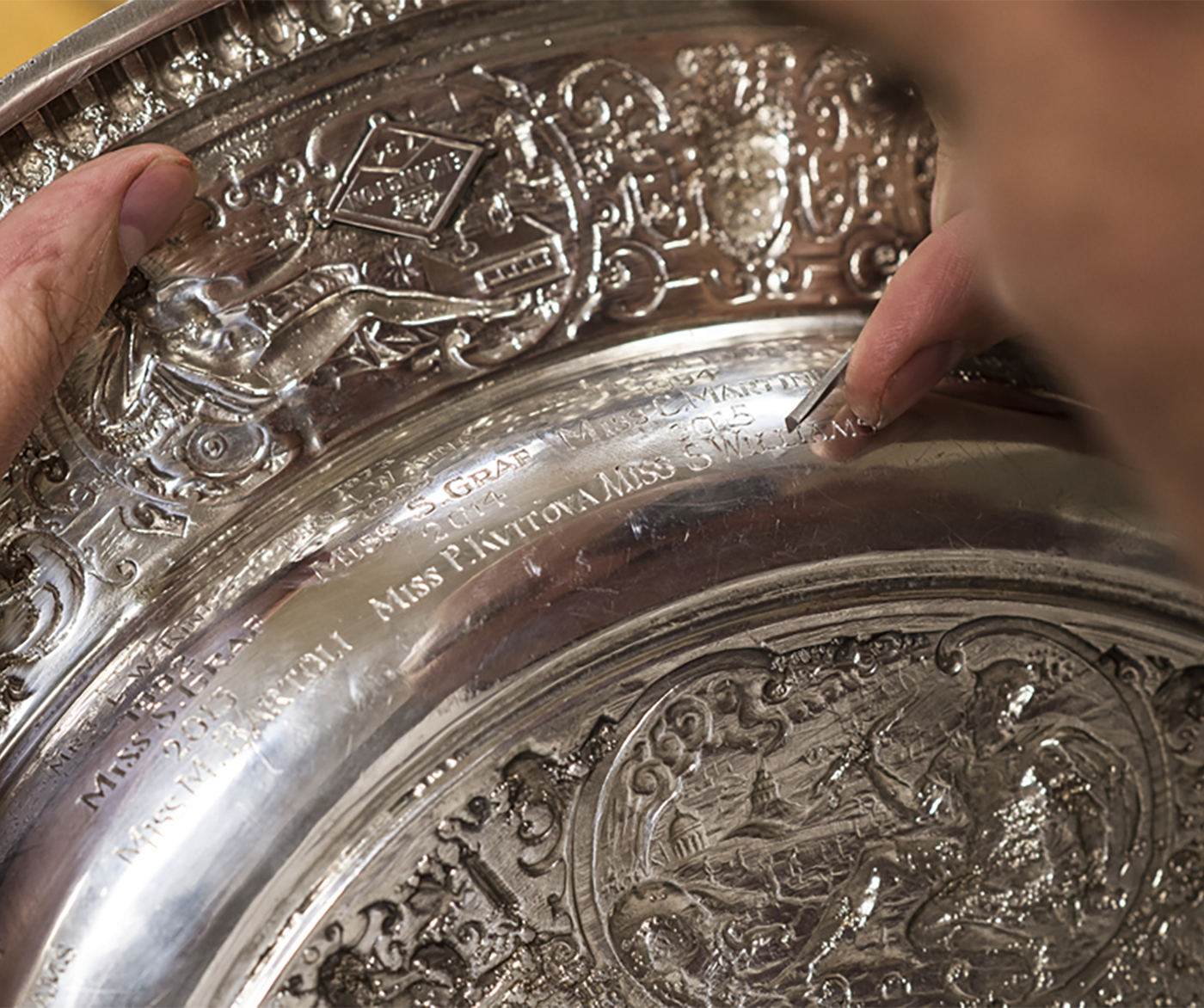No one knows the name that will be etched into the Wimbledon men's singles trophy on Sunday the 16th of July. But one thing is for certain – the man who'll be engraving it.
Roman Zoltowski has engraved every Wimbledon trophy for over 35 years, performing his first addition to these iconic pieces of silverware back in 1979. His work has included the doubles, seniors, juniors, veteran, and wheelchair competitions and many others. In total, Roman tackles 48 different trophies on his annual pilgrimage to London, with his unmistakable engraving abilities becoming as synonymous with Wimbledon as spotless green grass and quaffing prosecco on Henman Hill.
“This is the attraction of hand engraving. What is perfect about it is that it’s not perfect. It shows by its nature is that it was engraved by a living human being.” - Roman Zoltowski.
Pilgrimage is a fitting description for Roman's legacy as the master engraver of Wimbledon. Each year he drives from his home in Poznan, Poland, undertaking a staggering 18-hour round trip to perform his painstaking work on perhaps the most iconic and sought-after trophy in the world. Roman is prevented from flying due to the chisels and tools he requires to perform his duties, which, of course, aren't permitted on aeroplanes.
Roman sets off every summer in an MG convertible, packed with snacks, energy drinks and all manner of provisions to fuel his epic trek across the continent. This curious journey has equally curious origins.
Roman's transition from his early days in Poland to engraving his first Wimbledon trophy hasn't been an easy one. In 1939, when Russia invaded Poland, Roman's father was exiled to Siberia and imprisoned, tragically losing his life shortly after. Roman remained with his mother, before fleeing to Jerusalem for a period of four years. After this brief exile, the family moved on again in 1947, when, after being caught in the middle of another conflict – and under advice from the Israeli government – Roman and his family fled to Liverpool.
This is where he learned the trade that would become a huge part of his identity. Roman began as a freelance engraver at Halfhide jewellers in Merseyside – the place where he first laid hands on the iconic trophies of Wimbledon.
After establishing a reputation as the best man for this vitally important job, Roman's life took another shift, as his family returned to Poland after the Russian occupation finally ended in 1989. He joined them 6 years later in 1995, and by this stage, his relationship with the competition and dedication to his craft propelled him back every year, on that same scenic, 1500km car journey he's repeated, without fail, for 35 years.
Roman retired in 2015, and his years of taking his eccentric road trip towards the spotless green courts of Wimbledon have sadly drawn to a close.
For the past few years, our expert team of engravers has worked closely with Roman, learning from his decades of impeccable work and painstaking attention to detail. The job of engraving the trophies has now fallen to us, and since Roman's retirement, we've taken immense pride in continuing his work.
The ritual for this important job follows a similar pattern each year. The trophies are kept under strict guard throughout the tournament, and stored in a boardroom near centre court. This is where our team of three engravers add new names the silverware, and the elite tennis pros of the world have been known to sneak a peak while the engraving is in progress.
The final stage comes at the conclusion of the men's final, where the responsibility of engraving the one of the world's most illustrious trophies falls to Emmet, the owner of Rebus, who adds the newest name to the list of victors. As if the process wasn't pressurised enough, Emmet's work is live streamed and photographed by the media as it happens.
But without Roman Zoltowski, his decades of tireless dedication, and endless hours spent on the road, we don't think the Wimbledon trophies would have the same magic. Our team use his faultless work as inspiration, and to ensure Roman's legacy as the chief craftsmen of centre court, lives on.
All images courtesy of ©AELTC


